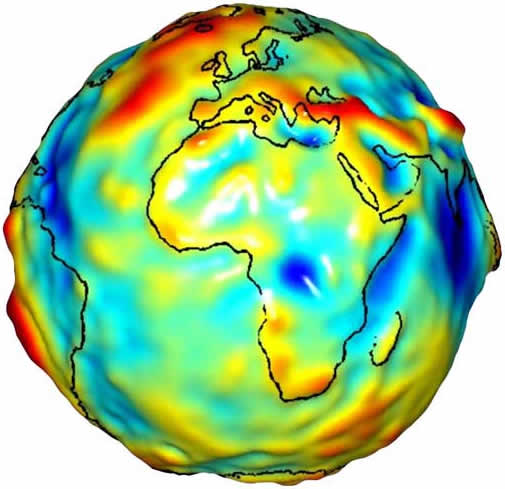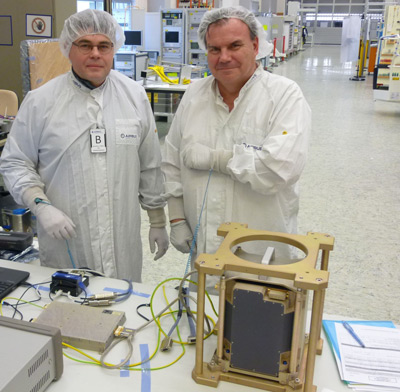ONERA accelerometers: NASA launches new satellites
Since you do not change a winning team, the satellites of NASA's Grace mission, launched on Tuesday 22 May 2018, will again be equipped with electrostatic accelerometers from ONERA. For the first mission, launched in 2002, ONERA had already developed and supplied the accelerometers: they have since run without a hitch for 15 years.

Representation of local values from gravity
to the surface of the globefrom Grace's
measurements (image NASA/JPL)
To recap, the Grace mission measurements provide highly precise dynamic information about the Earth's field of gravity, and therefore about the distribution of masses and their development over space and time. There are many environmental spin-offs: better knowledge of underground surface water, monitoring of sea levels, quantification of melting polar ice, tracking the consequences of climate change, etc.
Grace principle: two identical satellites follow each other's path in orbit at an altitude of 500 km. They are separated by a distance of 220 km. These satellites are connected by a microwave link that enables their separation to be measured extremely precisely: to several microns (GRACE-FO also ships a laser link in a technological demonstrator enabling measurements at least 10 times more precise). Each satellite is subject to the Earth's gravity, depending on the quantity of the Earth's mass vertical to its position. A greater quantity of mass has the effect of accelerating the satellite: it "falls" more quickly. Conversely, less ground mass slows the satellite down. The distance variations between the two satellites reveal gravity deviations on the surface of the globe. Multiple passages of the twin satellites provide information about movements in masses on different time scales.
Role of ONERA accelerometers: the Super Star accelerometers supplied by ONERA engineers to the JPL are used for measuring the residual drag of the satellites (i.e.: braking due to the residual atmosphere in low orbit). Knowing this interference drag helps guarantee the precision of the Grace gravimetric measurements.

Bruno Christophe and Bernard Foulon,
respectively project manager and expert
instrument for the accelerometers of
the next mission Grace FO
These instruments were delivered to the JPL* for Grace in 2001. In 2012 the JPL ordered new instruments for a total contract value of around €11M. The two flight models were fitted to the satellites by Airbus Germany, which manufactures the satellites.
These 15 years of the Grace mission - and its extension, Grace Follow On – are testament to NASA's confidence in the ultra-sensitive accelerometers from ONERA.
*Grace – Gravity Recovery and Climate Experiment – is an environmental space mission, a collaboration between NASA and the DLR*
*JPL: Jet Propulsion Laboratory, NASA/Caltech research centre
* DLR: German space agency